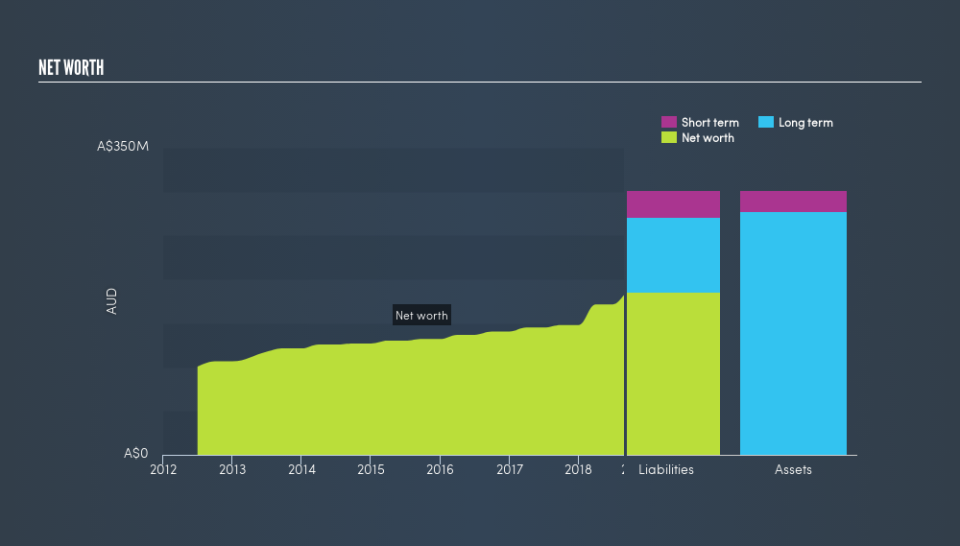Do You Know Pacific Energy Limited’s (ASX:PEA) Cash Situation?

Want to participate in a research study? Help shape the future of investing tools and earn a $60 gift card!
Two important questions to ask before you buy Pacific Energy Limited (ASX:PEA) is, how it makes money and how it spends its cash. This difference directly flows down to how much the stock is worth. Operating in the industry, PEA is currently valued at AU$273m. I will take you through PEA’s cash flow health and the risk-return concept based on the stock’s cash flow yield, using the most recent financial data. This will help you think about the company from a cash perspective, which is a crucial factor to investing.
View our latest analysis for Pacific Energy
Is Pacific Energy generating enough cash?
Free cash flow (FCF) is the amount of cash Pacific Energy has left after it pays off its expenses, including its net capital expenditures, which is what the company needs to spend each year to maintain or grow its business operations.
I will be analysing Pacific Energy’s FCF by looking at its FCF yield and its operating cash flow growth. The yield will tell us whether the stock is generating enough cash to compensate for the risk investors take on by holding a single stock, which I will compare to the market index. The growth will proxy for sustainability levels of this cash generation.
Free Cash Flow = Operating Cash Flows – Net Capital Expenditure
Free Cash Flow Yield = Free Cash Flow / Enterprise Value
where Enterprise Value = Market Capitalisation + Net Debt
Along with a positive operating cash flow, Pacific Energy also generates a positive free cash flow. However, the yield of 3.92% is not sufficient to compensate for the level of risk investors are taking on. This is because Pacific Energy’s yield is well-below the market yield, in addition to serving higher risk compared to the well-diversified market index.
Is Pacific Energy's yield sustainable?
Does PEA’s future look brighter in terms of its ability to generate higher operating cash flows? This can be estimated by examining the trend of the company’s operating cash flow moving forward. In the next couple of years, PEA is expected to deliver a decline in operating cash flow compared to the most recent level of AU$46m, which is not an encouraging sign. Breaking down operating cash growth into a year-on-year basis, it seems like PEA will face a continued decline in growth rates, from -0.1% next year, to -0.8% in the following year.
Next Steps:
Pacific Energy’s low free cash flow yield is deterring, in addition to its negative growth prospects. This means that, as an investor, you would be rewarded less than just holding a portfolio made up of all the stocks in the market, as well as taking on higher risk! Now you know to keep cash flows in mind, I suggest you continue to research Pacific Energy to get a better picture of the company by looking at:
Valuation: What is PEA worth today? Is the stock undervalued, even when its growth outlook is factored into its intrinsic value? The intrinsic value infographic in our free research report helps visualize whether PEA is currently mispriced by the market.
Management Team: An experienced management team on the helm increases our confidence in the business – take a look at who sits on Pacific Energy’s board and the CEO’s back ground.
Other High-Performing Stocks: If you believe you should cushion your portfolio with something less risky, scroll through our free list of these great stocks here.
We aim to bring you long-term focused research analysis driven by fundamental data. Note that our analysis may not factor in the latest price-sensitive company announcements or qualitative material.
If you spot an error that warrants correction, please contact the editor at editorial-team@simplywallst.com. This article by Simply Wall St is general in nature. It does not constitute a recommendation to buy or sell any stock, and does not take account of your objectives, or your financial situation. Simply Wall St has no position in the stocks mentioned. Thank you for reading.

 Yahoo Finance
Yahoo Finance 
